Days 4 and 5 were all about waterfalls. Day 5 and 6 was all about
NOT falling.
On Sunday, we arrived at our campsite at 5:30 or
so and unloaded the bus and started setting up tents while Tota made dinner. We
had stopped for fresh fish on the way in, and it smelled delicious as she was
cooking, which motivated us to get finished quickly. Cathy and I helped each
other set up our tents, with a little (ok, a lot) of assistance from Runnar, our
driver. It went a little more smoothly than I anticipated, but was still
somewhat comical, as this was the first time I’d ever set up a tent on my own
that I recall. The kids slept two to a tent but Cathy and I each had our own
tent, so we were living large.
We ate (it WAS delicious…amazing what she can do with a
propane stove!), did the dishes and then one group went on a hike, one group
went with Gianluca to learn time lapse photography and a few of us stayed at
camp to edit/download pictures. I finally went to my tent around 10:45. Determined
to stay warm for the night, I spent the next 20 minutes putting on layer after
layer of clothing. I slithered into in my brand new, rated for 15 degrees REI
sleeping bag and put one hand warmer heat pack at my feet and one under my
back. I’ve been using my headphones and a “white noise” app to block out noise
while I’m falling asleep, and for this night, I chose the sound of a crackling
fire to trick my mind into thinking I was warm. Let’s just say…it worked. I
fell asleep pretty quickly and within an hour, I was throwing off my sleeping
bag cover and stripping off layers as if the fire from my phone app had
materialized in my tent.
We got up bright and early on Monday, ate a quick breakfast
and rushed to meet with our guides for our glacier climb. I wasn’t really
“rushing” anywhere, as I was limping again AND my back was not happy with me
about sleeping on the ground. I was a bit skeptical about the glacier climb. On
my best day, the likelihood of me hurting myself somewhat is better than
average. With a hurt foot, I put my odds at 80%. However, I didn’t want to miss
this opportunity, so I hobbled on up for my hiking boot and crampons fitting.
We then suited up in harnesses and helmets, and I quickly realized we weren’t
just taking a leisurely stroll across the glacier. I was envisioning
ice-skating in hiking boots…but that’s not really what it was at all. I felt
sure I was going to have to be helicoptered out of the crevasse I knew I was
going to fall into.
We loaded up in the van, drove to the edge of the glacier,
got a quick safety lesson from our awesome guides, Tom and Sif, and set out.
Before we even saw ice, we had to use a rope to walk down the side of a huge
rock…don’t get me wrong, we weren’t REPELLING, but it did involve more skill
and coordination than I expected from the first 30 seconds of our hike. We made
it to the ice and were taught how to put on our crampons and use/hold our ice
picks. We then practiced walking up a slope, down a slope and across a slope in
our crampons. We tightened our helmet and went forth with Tom’s most genius
advice: “avoid the holes, especially the really big ones.”
About five minutes into the hike, we had to walk across a
ledge that had a crevasse on either side. It wasn’t particularly narrow, but
intimidating enough to a beginner. Tom showed us to use our harness ropes and
carabineers to clip on and off the rope. It took about 3-5 minutes for each
person to cross and we basically had to go one at a time, so it took a while. I
watched several people ahead of me and it seemed pretty straightforward.
However, when I was actually doing it myself and looking down to my right at
the “really big hole,” it was a little scarier. I just chose not to look down
and got to the end without a problem.
A few minutes later, we came to another rope crossing that
required more clipping on/clipping off. I was almost across when I came to a
spot that had a small (about a foot wide and who knows how deep) crack in the
glacier. I was supposed to go right, but I went left. Left was not a good
choice. I stepped on melting ice and my leg went right through about two feet
into the crack. Luckily, it was just slushy ice and not water, but I still
managed to get my left leg wet. Thanks to my very expensive REI waterproof
pants, I dried off pretty quickly and the only last effect was a really nice
softball sized bruise on my calf the next day.
The rest of the climb was pretty uneventful, meaning no one
fell off the glacier, including me. We had packed sandwiches before we left, so
we literally sat on the glacier and ate lunch. Tom and Sif talked to us a bit
about the formation of the glacier, its history and the rate at which its
melting/disappearing. Towards the end of the hike, Erika suggested we each find
a spot out on our own, away from everyone else to simply sit in contamplation
for a few minutes. All of us found a spot, and we sat perfectly still and
silent for 10 minutes to just take it all in. It was a very cool moment and
many of the kids said it was the high point of their day. It was definitely the
high point of mine. We headed back down the glacier and at the end of the trek,
we stopped and filled up our water bottles in a clear stream that was flowing
through the ice. It was the clearest, coldest, best tasting water I’ve ever had.
We got back to camp by 4:00 or some of the kids started
downloading/editing pictures with Gianluca and Erika, while others headed to
the showers. I charged my laptop and camera in the vistors’ center and then
went back to camp before dinner. Tota made spaghetti with meat sauce, again
delicious. We were also celebrating Cindy’s birthday. We had noticed earlier in
the day that a family across the way had brought an accordian and a guitar and
the dad seemed to know how to play both pretty well. Peter invited them to
dinner and asked him to bring his instruments. The family – Mangus, Annie, Mia
and Richard – ate with us and then we sang Happy Birthday, accompanied by the
accordian, to Cindy. We then listened to Mangus play several more songs and we
visited with them about all kinds of topics. Mangus mentioned that Icelanders
are generally very accepting of others and generally follow the “live and let
live” theory. Annie asked me why so many Americans were opposed to gay
marriage, as she has been seeing a lot about this topic in the news. She also
asked me why the South (U.S.) was more conservative than the North. I laughed,
and asked her how much time she had! We gave her a pretty basic answer, but
when I mentioned the Civil War and the history of the US, she knew exactly what
I was talking about, which surprised me and impressed me and actually,
embarrassed me. Annie is German and knew more about our history than many
Americans do. She also explained that in Germany, people are still very
sensitive about anything relating to WWII and talk about it with the utmost
“political correctness” (her words). Mangus, who is Icelandic, said the Germans
are “way too uptight” (his words) and that Icelanders often come across as
“insensitive asses” because of their “get over it” attitude. I talked to them
for over an hour. When I travel to foreign countries, I always love talking to
locals about topics like these, and I was especially happy that many of the
students were there for the conversation as well. While we were talking,
several of our students were playing with Mia and Richard, who were both
well-behaved and adorable.
By 9:30, I decided I need to head to the showers. The
showers required a pre-paid card that allowed five minutes of water per card. I
had two cards and was very much looking forward to a ten-minute hot shower
after our day on the glacier. All three showers were full when I got to the
building, and several people were waiting in line in front of me. After a 30-40
minute wait, it was finally my turn. I inserted the card, turned on the water
and was thrilled to be able to just stand and soak in the hot water. After
about two minutes, the water went from hot to warm. At the three minute mark, I
was showering in water colder than the glacier water we drank earlier in the
day. I turned off the water, one leg shaved, one not and dried off in the
freezing cold bathroom with my 2’ by 2’ quick-dry towel. I got back to the tent
as quickly as I could, got in my sleeping bag and turned on my fireplace app to
convince myself I was warm. I woke up around midnight to the sound of cameras
clicking and some oooohing and ahhhhing. I unzipped my tent to this site:
The fog had cleared and we were getting the midnight view of
the mountain above the glacier. I took 70-something photos of the exact same
thing, jusssst to make sure I was capturing the moment and went back to sleep.
On Tuesday, we got to sleep in…’til 7:30! We had to pack up
our tents and our stuff, which turned out to be more of a fiasco than trying to
get the tent up. First, I don’t know how I am ever going to get all my stuff
packed back in my suitcase to get it home. A friend of the male persuasion
helped me pack and I have NO IDEA how he got all my stuff in one bag and got it
zipped. I am pretty sure I am going to have to leave my sleeping mat, a coat
and a pair of brand new rubber boots here. Once I got my bag semi-packed (but
not completely zipped!), I started on the tent take-down. Hilarious! I pretty
much got trapped in the collapsed tent for 45 seconds or so trying to swim my
way out of a sea of orange canvas. Managed to come out alive and finally get
everything on the bus so we could set out for Hofn, population 2000. Before we left, Mia and Richard ran across from their campsite to tell us goodbye again and waved goodbye to the bus as we passed.
On the way to Hofn, we stopped for a zodiac boat tour of the
Jokulsarlon glacier lagoon. It was my second best highlight of the trip so far,
behind the glacier climb. We were all given very large, very insulated wet
suits that made us look like firemen/astronauts/Icelandid Michelin men, then we
rode over in a van to the glacier. As we were waiting to get in our wetsuits
and as we drove in the van, hundreds of Arctic terns dive-bombed us and the
van. It was a scene straight out of The Birds. The terns nest on the ground and
this is nesting season, so we were walking and driving through and around their
nests and their chicks. We also learned that the tern migrates further than any
other bird species in the world, and over its lifetime, one tern will fly the
equivalent of three round trips to the moon.
We split up and piled into two different rubber boats with a
motor on the back, and sat on the side, holding on to ropes so we wouldn’t fall
into the freezing cold lagoon. Once again, the them was NO FALLING! The lagoon
sits at the base of the glacier, which is filled with icebergs and huge floating
chunks of the glacier. Our very handsome captain, Astmar (which means “loves
the sea”), explained that the lagoon doesn’t freeze because it is a mixture of
glacier run-off (fresh water) and sea water, and the salt in the water keeps it
from freezing. He also reminded us of a scene from Die Another Day where James
Bond and his nemesis drive over the frozen lagoon and blow up a bunch of stuff
and die a lot. Before the movie was filmed here, the government agreed to close
the damn between the Atlantic and the lagoon so it would freeze over. Astmar
drove us all around the lagoon so we could take pictures and stopped to pick up
a chunk of an iceberg for the kids to hold. I was amazed at how BLUE parts of
the icebergs were…bright turquoise blue swirled into pale blues and white
everywhere we looked. We spent about an hour on the lagoon before heading back.
After the lagoon tour, we drove about 1000 yards across the
way to the beach. We were literally at the point where the glacier meets the
sea and it was fascinating to find ICEBERGS on the BEACH! We were standing on a
black sand beach in June, looking at the Atlantic with huge chunks of ice on
the beach and in the shoreline. The ice chunks break free from the lagoon and
float into the sea and parts of them wash ashore. We took pictures on the beach
for an hour or so and then had lunch near the bus before going on to Hofn.
Along the way, we saw reindeer on the side of the road and Runnar stopped so we could take some pictures.
We arrived to Hofn around 5:30 and got settled into our hostile, which is very nice. There’s a large community kitchen and dining area, basic rooms with bunk beds or two single beds and several private bathrooms in the hall. We walked to dinner, where I had a reindeer burger (really good!), then walked back home for editing/downloading time and our nightly meeting. I took my first hot shower in four days, so I was happy and warm going to sleep. NOT too happy about setting a 6:30 am alarm, but excited to see Hofn, lobster capital of Iceland!
Along the way, we saw reindeer on the side of the road and Runnar stopped so we could take some pictures.
We arrived to Hofn around 5:30 and got settled into our hostile, which is very nice. There’s a large community kitchen and dining area, basic rooms with bunk beds or two single beds and several private bathrooms in the hall. We walked to dinner, where I had a reindeer burger (really good!), then walked back home for editing/downloading time and our nightly meeting. I took my first hot shower in four days, so I was happy and warm going to sleep. NOT too happy about setting a 6:30 am alarm, but excited to see Hofn, lobster capital of Iceland!


















































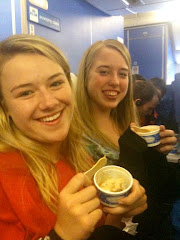





















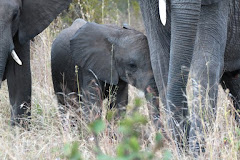




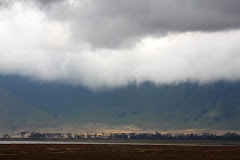

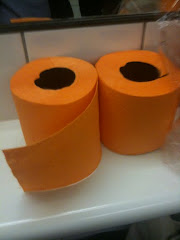














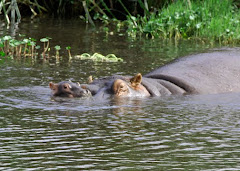















No comments:
Post a Comment